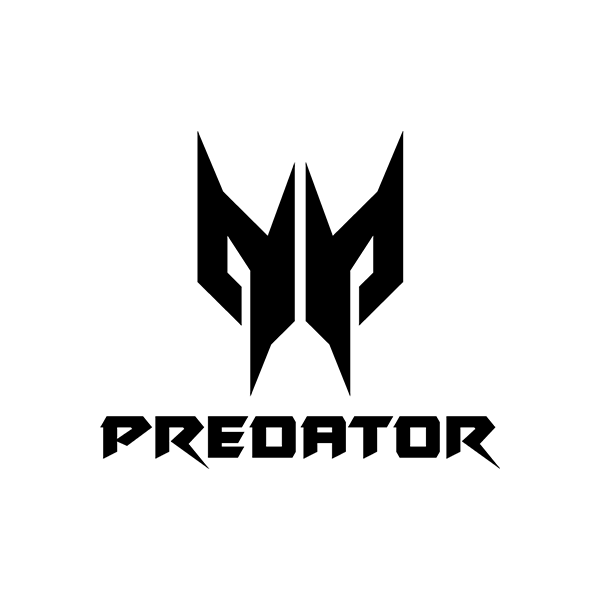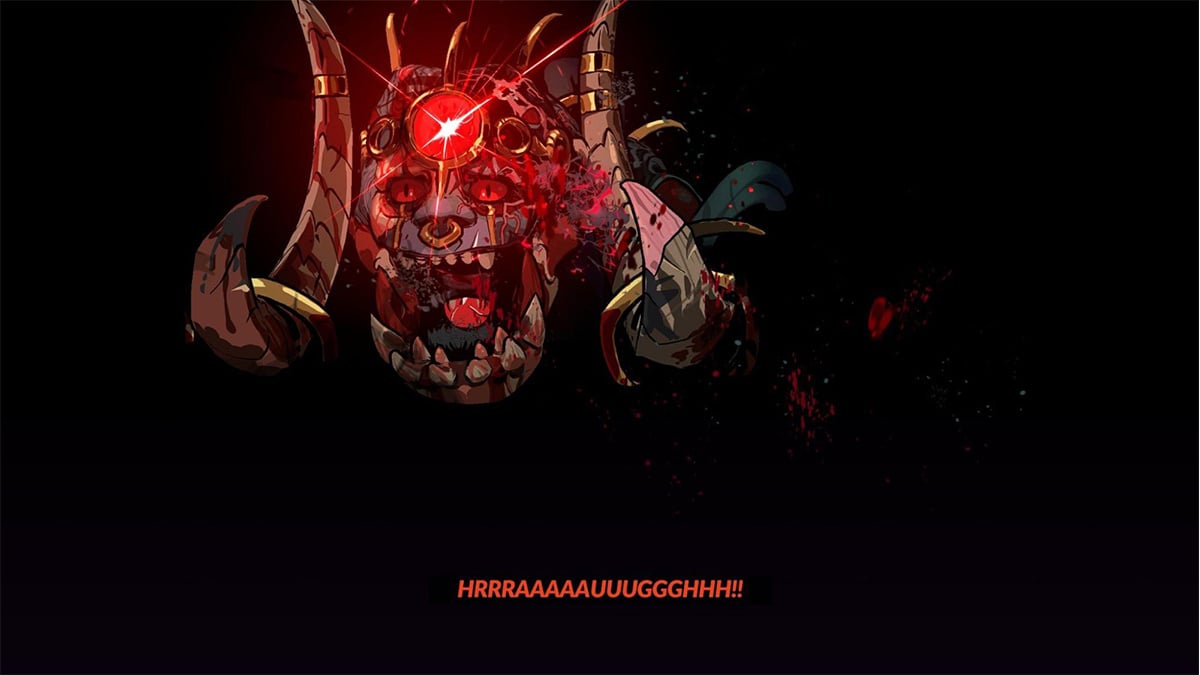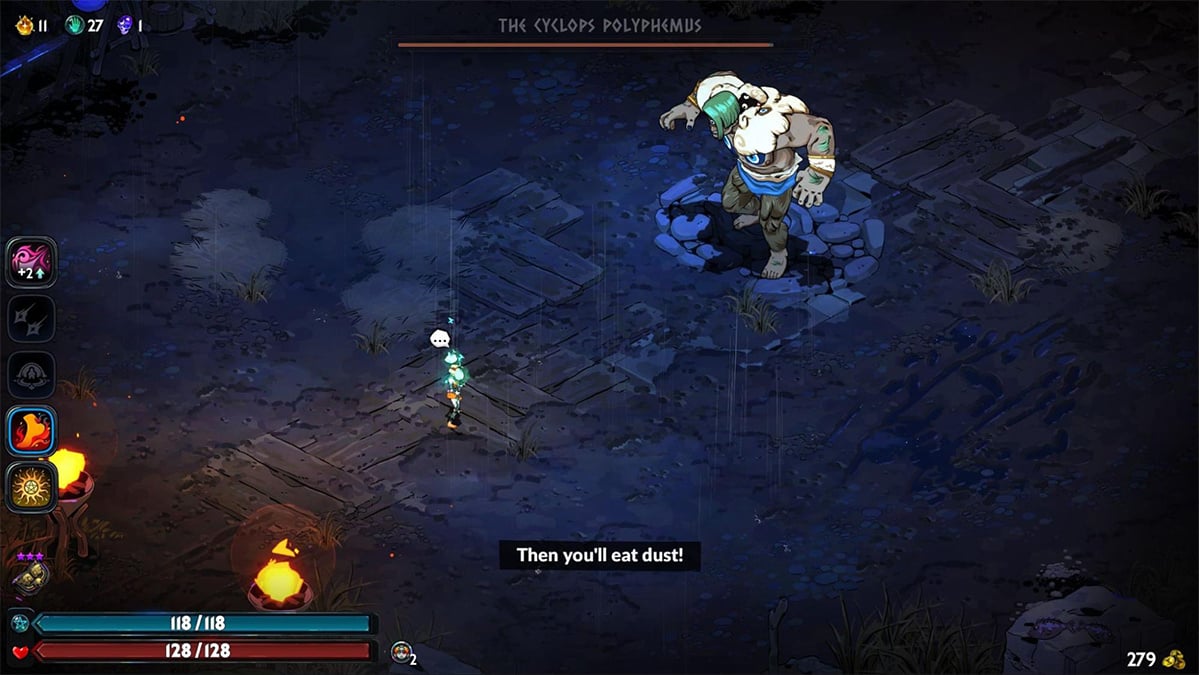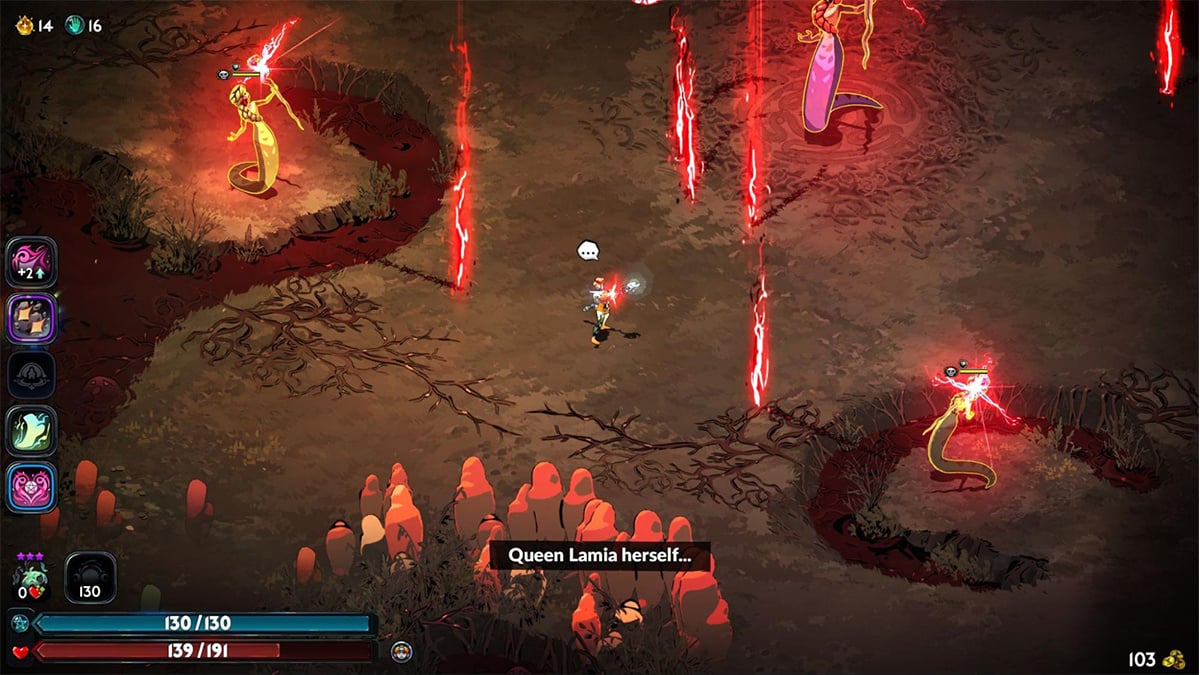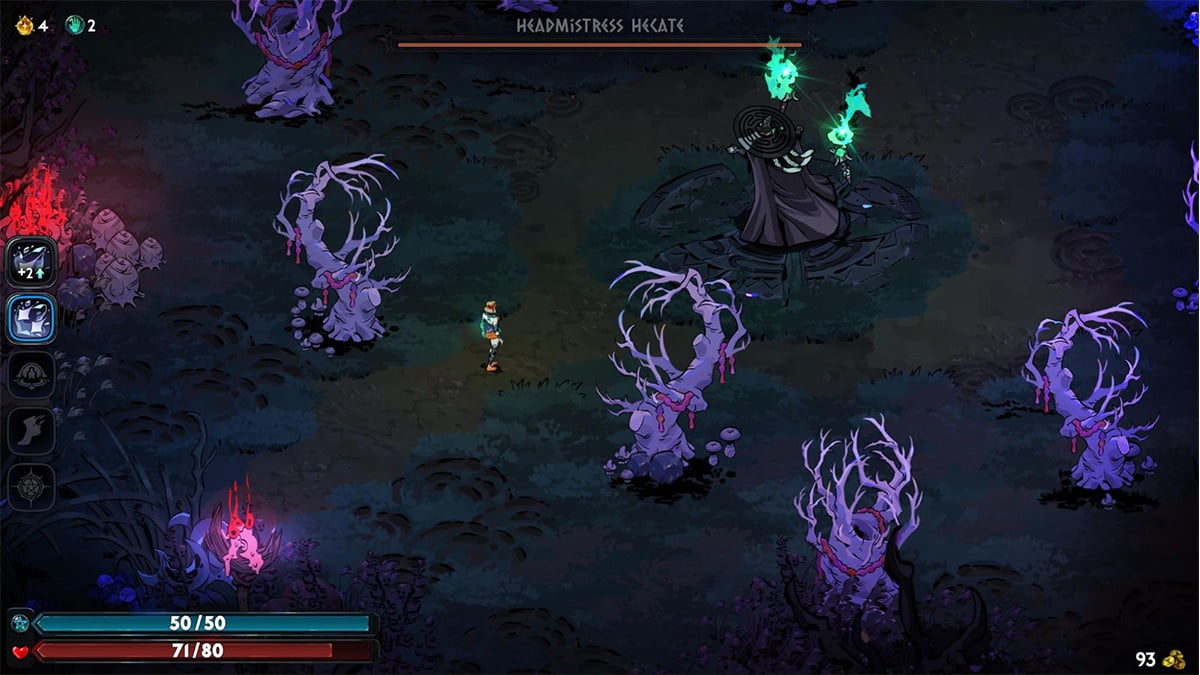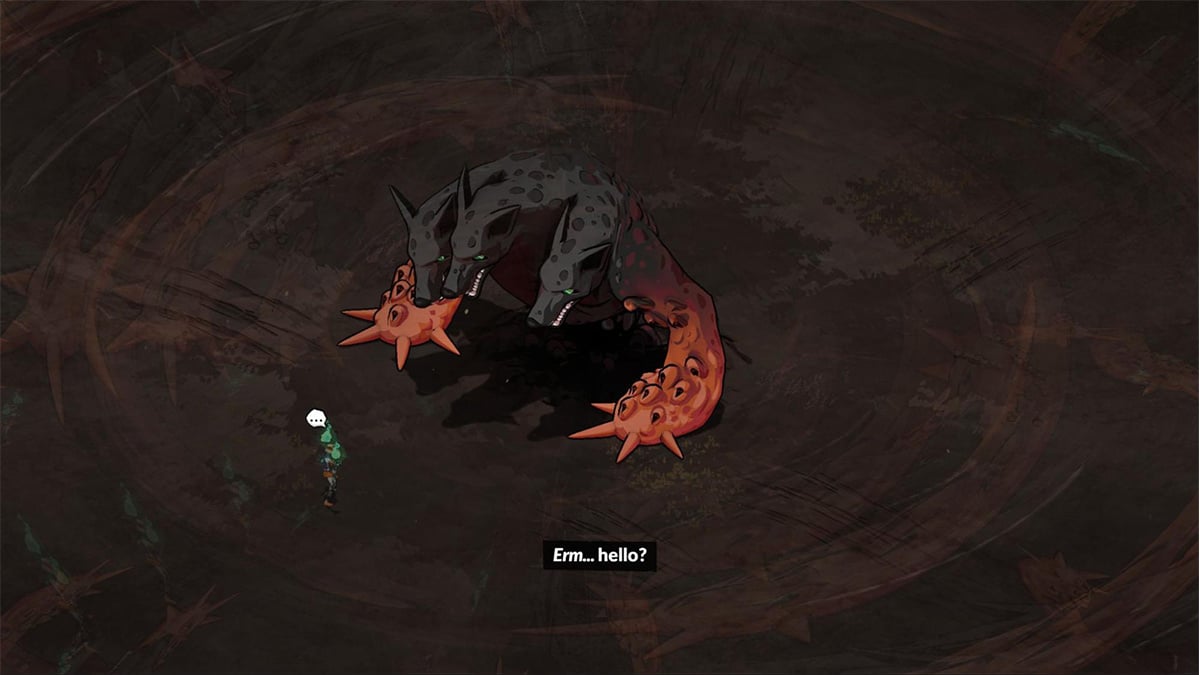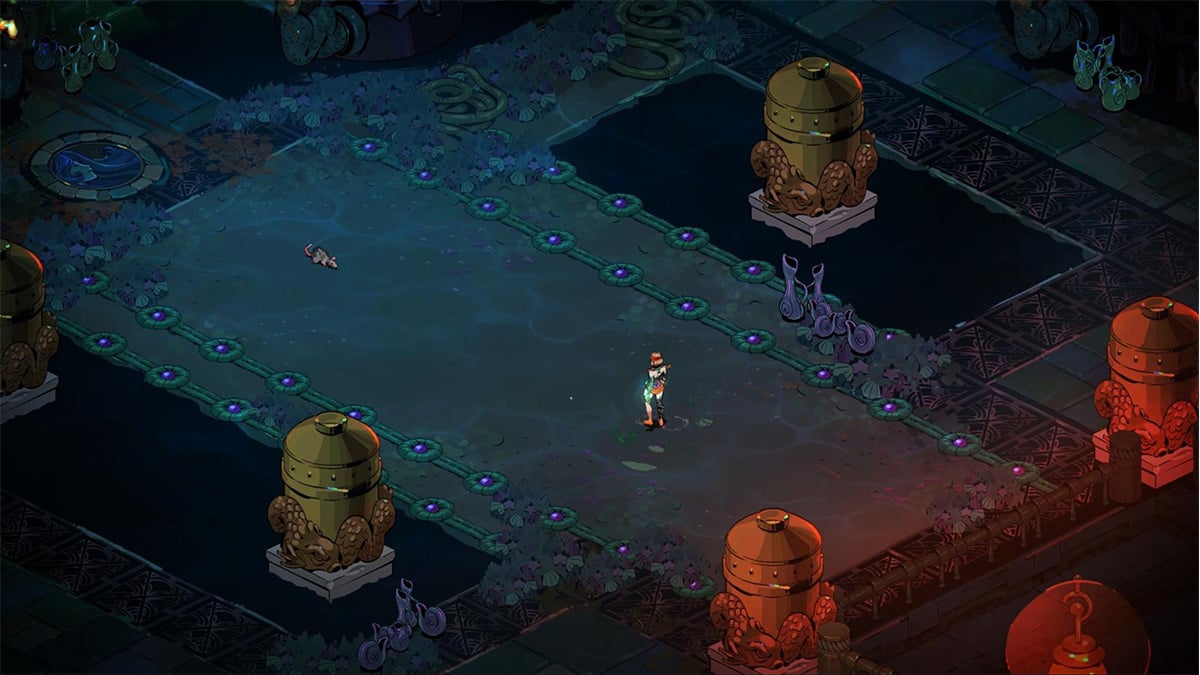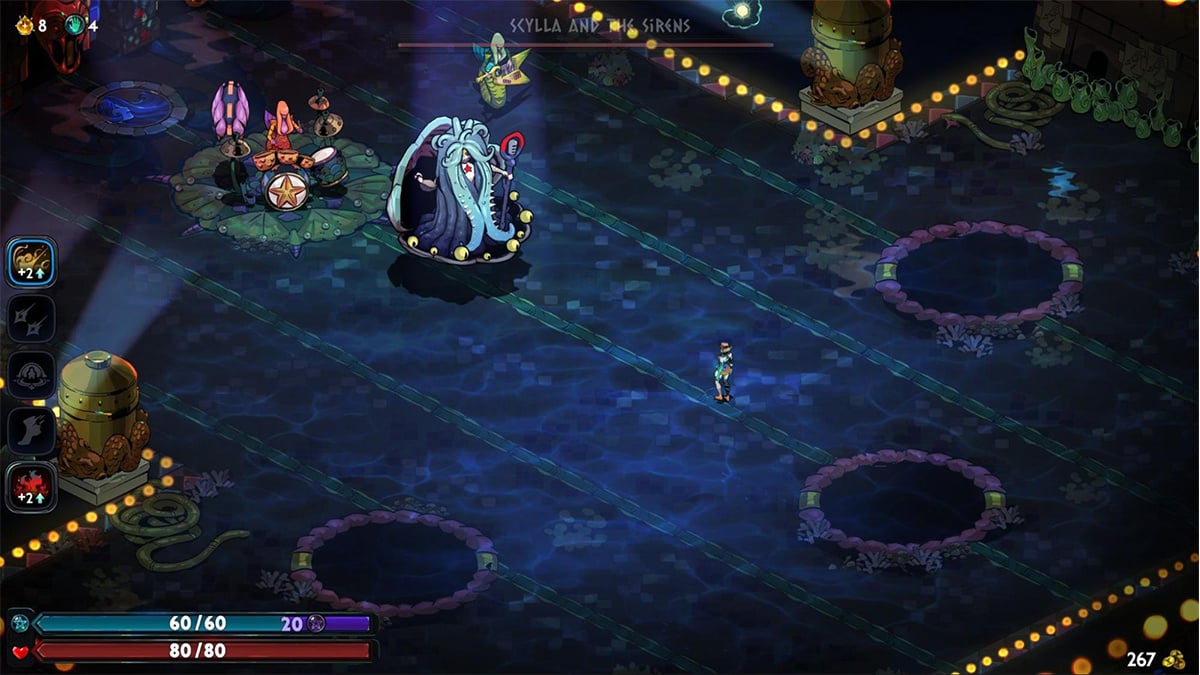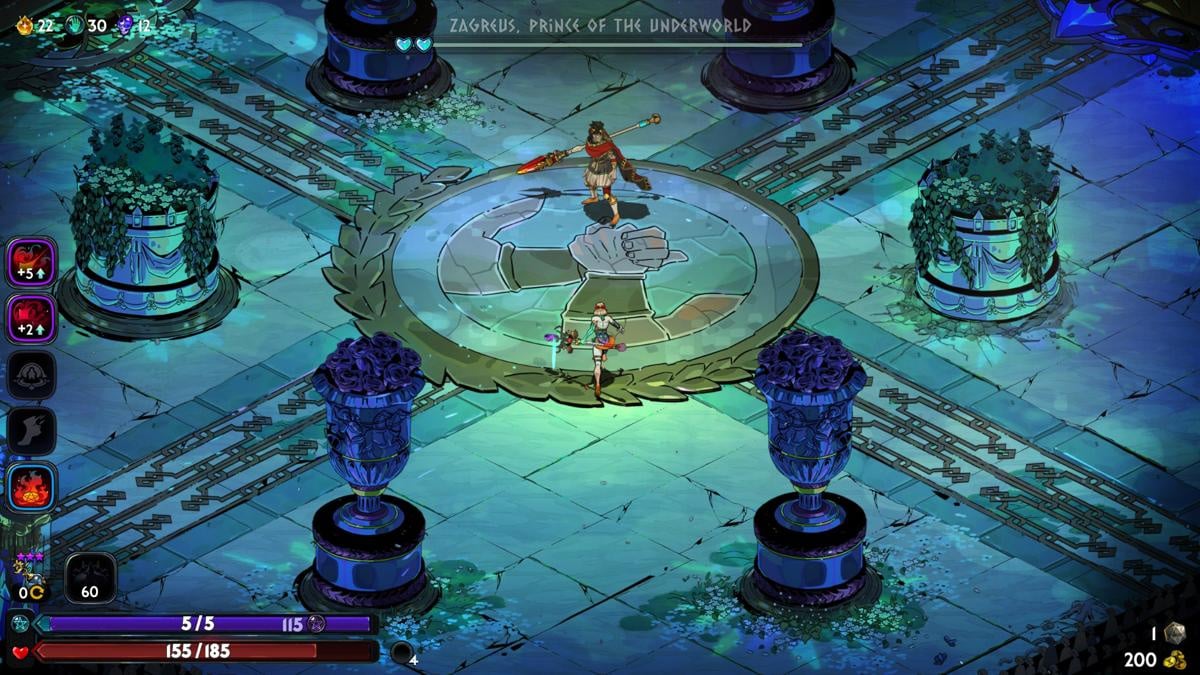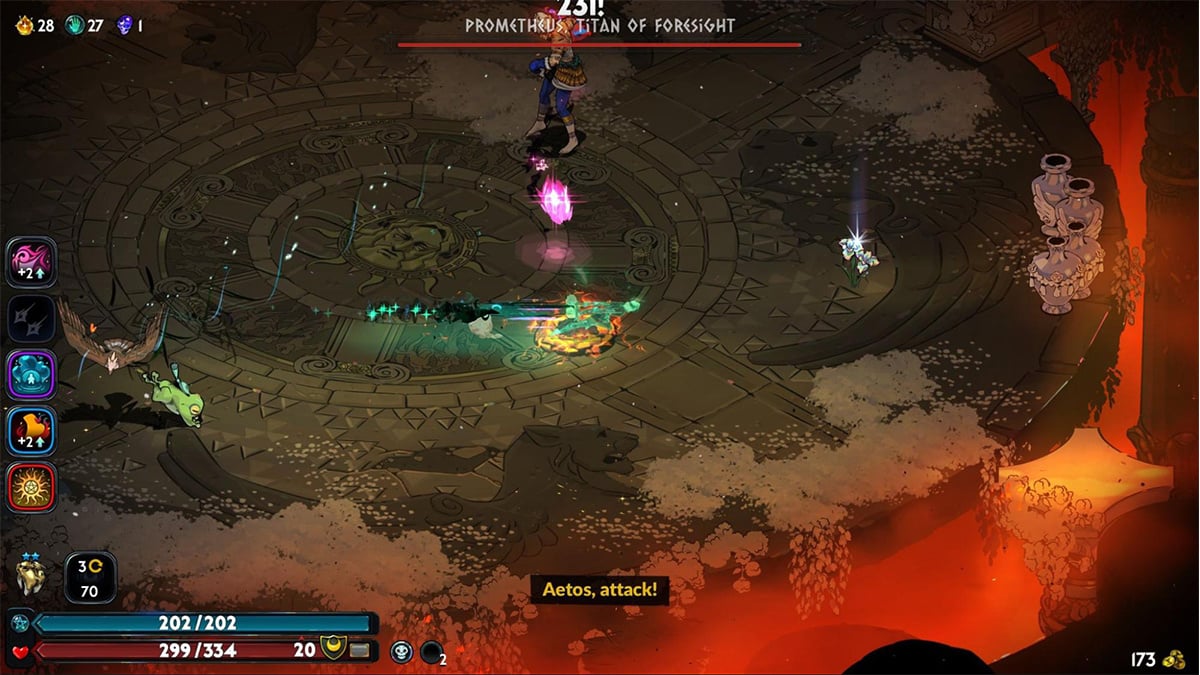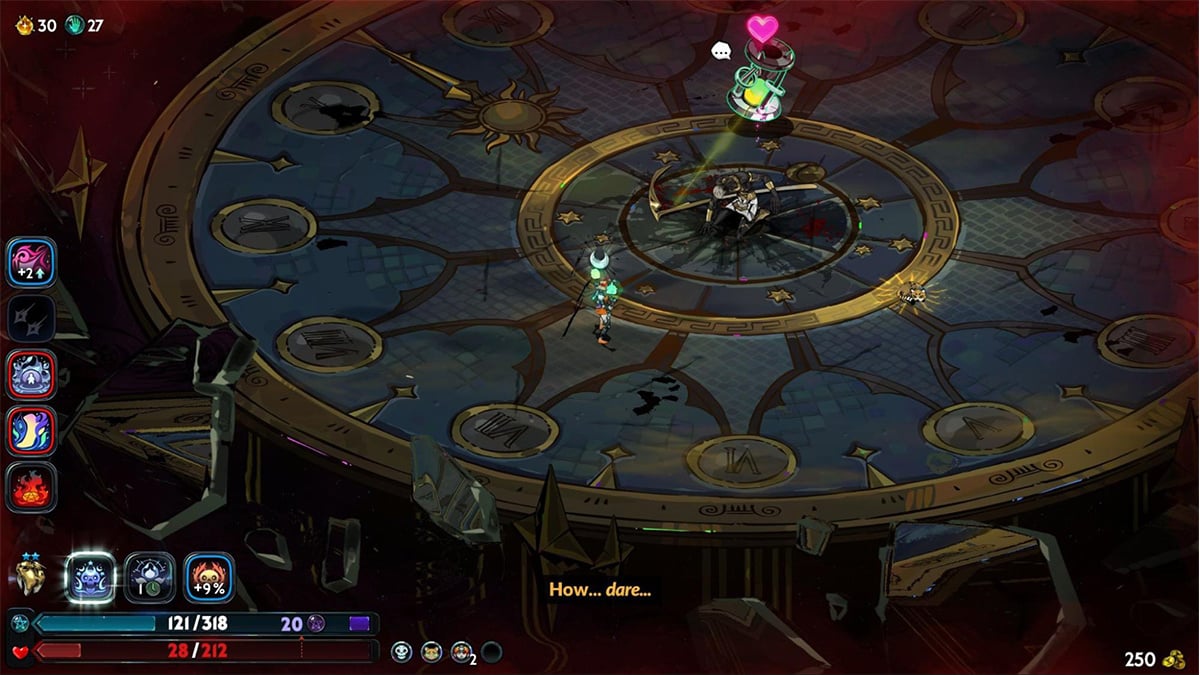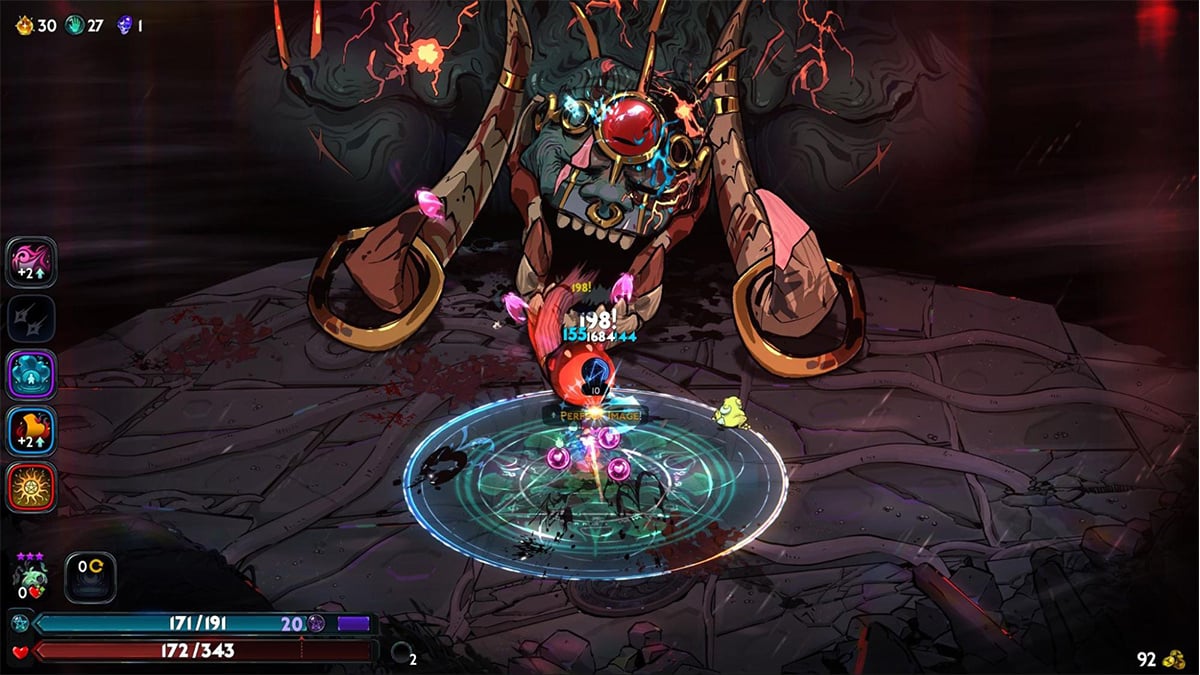Hardest Bosses in Hades 2
Hades 2 raises the stakes of every Underworld escape with a new lineup of bosses drawn from Greek mythology, from ancient Titans to your own teacher and even your family pet. Each major fight tests your mastery of Boons, Arcana, and Nocturnal Arms in different ways, blending pattern recognition, reflex, and resource management into one relentless challenge.
While early bosses like Hecate teach you core combat fundamentals, late-game foes such as Chronos and Typhon demand near-perfect execution and build synergy. This ranking lists every major boss in Hades 2 from easiest to hardest, based on attack complexity, phase design, and overall difficulty on standard runs without Vow of Rivals modifiers.
10. Polyphemus
Polyphemus is the final boss of the City of Ephyra, the first surface region in Hades 2. Despite his size and power, he is one of the game’s more predictable bosses once you learn his patterns. Most of his attacks are slow melee strikes that deal heavy damage but have clear visual cues, including ground slams, shockwave jumps, leg sweeps, and a grab attack.
He occasionally summons enemies to distract you and may even call in sheep during the fight, which you should eliminate quickly to prevent interference. Because all his attacks are short-ranged, the best strategy is to maintain distance and use ranged weapons or magic-based builds. With patience and positioning, Polyphemus becomes a straightforward fight that rewards careful dodging and steady offense.
9. Queen Lamia
Queen Lamia is a mini-boss encountered in the Fields of Mourning, the third region in Hades 2. She commands both powerful magic and several Lamia minions, making her one of the more chaotic midgame encounters. Her fight revolves around constant movement and crowd control rather than raw damage.
Lamia’s main attacks include vertical tracking lasers, a ground slam that deals area damage, and orb projectiles that burst into slimes if not destroyed. During the fight, four armored Lamia minions join the battle, each casting their own lasers until their armor is broken. Taking them out early is critical to reducing pressure and regaining space in the arena.
The best strategy is to stay mobile and use ranged attacks to chip away at Lamia’s armor before closing in for direct hits. Boons from Hestia or Demeter are especially useful: Hestia’s scorch effects add steady damage, while Demeter’s freeze slows Lamia’s movements and opens safe windows for counterattacks. Once her armor breaks, the rest of the fight ends quickly, making patience the key to victory.
8. Headmistress Hecate
Headmistress Hecate is the first major boss in Hades 2, encountered at the end of the Erebus region on the Tartarus route. As Melinoe’s mentor, she tests your readiness before you can progress to Oceanus. Hecate’s fight is a mix of magical and summoning attacks, and while she is not especially difficult, her variety of patterns can overwhelm new players during early runs.
Her moveset includes expanding flame circles, twin flame projectiles, crescent arcs, and summoning wraiths that attack from range. At lower health, she creates mirror images that replicate her spells, forcing you to find and target the real one. In her final phase, Hecate casts Hex, which can transform you into a sheep or fill the arena with rotating lasers, homing fireballs, or ground traps that punish poor positioning.
Ranged attacks and mobility-focused builds are the safest way to defeat her. Boons like Apollo’s Nova Strike, Artemis’s Support Fire, and Hermes’s Swift Flourish help maintain distance while steadily chipping away at her health. Once you learn her spell timings, Hecate becomes more of a skill check than a true roadblock.
7. Infernal Beast
The Infernal Beast, a corrupted version of Cerberus, is the final boss of the Fields of Mourning region in Hades 2. Once Melinoe’s loyal companion, the hound has been twisted by Chronos’ influence, turning this encounter into a battle of redemption rather than simple conquest.
Cerberus relies on wide, sweeping melee and fire-based attacks. His moves include Ground Slam, Flame Slash, and Fire Breath, each covering large portions of the arena. When his health drops to half, he fills the field with red circles that mark incoming area attacks. The key strategy is to stay mobile and strike from behind, avoiding his frontal swipes and flames.
Boons that add damage over time or enhance mobility work best here. Aphrodite’s Passion Dash, Hestia’s Smolder Ring, and Apollo’s Solar Ring help maintain constant damage output while keeping you out of harm’s way. Once defeated, Cerberus drops a Tear, symbolizing his liberation from Chronos’ control.
6. King Vermin
King Vermin is a rare mini-boss found in the Oceanus region of Hades 2. Despite being an optional encounter, it’s tough enough to rival full boss fights and is infamous for its speed and unpredictable movement. The creature constantly darts around the arena with Charging Rush and Screaming Attack, both of which deal heavy damage if not dodged in time.
At around 70% health, King Vermin begins summoning Wretched Pests that hurl bombs across the battlefield. These explosions damage both Melinoe and the boss itself, allowing clever players to turn its minions against it. When cornered, King Vermin uses Jump Slam, an area attack that punishes staying too close.
The best approach is to keep distance and rely on Cast-based attacks to hit safely between its rushes. Use your dashes sparingly to evade its AoE slams, and if possible, lure the boss near its own bombs for bonus damage. Though not a required fight, defeating King Vermin rewards a random boon or upgrade and proves you’re ready for the escalating pace of Hades 2’s later battles.
5. Scylla and the Sirens
Scylla and the Sirens are the final bosses of Oceanus, the second major region in Hades 2. This fight is both chaotic and theatrical, featuring three performers who share a single health pool: Scylla the vocalist, Jetty the guitarist, and Roxy the drummer. Each brings a distinct attack style that tests your awareness and mobility.
In Phase 1, all three fight together using their unique abilities. Scylla unleashes sonic screams, spinning blades, and homing melody orbs. Jetty dashes across the stage and launches bouncing projectiles, while Roxy fills the arena with rhythmic shockwaves that force you to move constantly.
Phase 2 introduces the Featured Artist mechanic, where one Siren gains new abilities. Scylla extends her range and increases her number of orbs, Jetty moves faster and creates multiple expanding waves, and Roxy adds more complex area attacks. After all three are defeated, Phase 3 begins with Scylla performing solo while summoning endless Pinhead fish until her health is fully depleted.
The best approach is to focus on one Siren at a time, taking out Roxy first to reduce area-of-effect pressure. Boons like Aphrodite’s Heartbreak Strike for stronger attacks, Zeus’s Storm Ring for damage against stationary enemies, and Hermes’s Nitro Boost for faster dodges make the fight more manageable. Winning rewards you with a Pearl and opens the path to the Fields of Mourning.
4. Zagreus
Zagreus, the Prince of the Underworld and Melinoe’s older brother, is one of the most thrilling secret bosses in Hades 2. You can only challenge him after completing the true ending and unlocking the epilogue, where Chronos’ defeat restores balance to the Underworld. This encounter serves as a symbolic duel between siblings — a test of everything Melinoe has learned throughout her journey.
To find him, look for the Infernal Contract, a red scroll that can randomly appear in any of Charon’s shops. Interacting with it transports you to Elysium’s colosseum, the same arena where Zagreus once fought Theseus and Asterius in the first game. There, you’ll face the former hero of the Underworld himself, wielding Gigaros, the spear once belonging to Hades.
In Phase 1, Zagreus relies on speed and precision. His Dash Strike lets him close gaps quickly, while Whirlwind Sweep spins his spear in a circular slash that punishes anyone nearby. He also throws his Cast, a red projectile that detonates on impact. Most of his attacks are close-ranged, so keeping your distance and striking between his recovery windows is key.
After depleting his health once, Zagreus uses Death Defiance, reviving at half health and entering Phase 2. This phase plays almost identically, but he becomes much faster, often chaining dashes before attacking. He can also turn invisible briefly to reposition or ambush you. When this happens, keep moving — his next strike will usually target your last location.
The safest approach is to kite Zagreus across the arena using ranged weapons or Omega abilities, attacking while he recovers from his melee combos. Pillars in the colosseum can block many of his spear attacks and projectiles, allowing you to reposition or regenerate Magick.
For boons, prioritize ranged and Magick-based builds. Hestia’s Controlled Burn and Poseidon’s Geyser Sprout give you reliable crowd control, while Zeus’s Heaven Strike inflicts Blitz damage for extra punishment after each hit. Ionic Gain from Zeus is also invaluable, creating an orb that restores your Magick throughout the battle.
Zagreus hits hard but is predictable once you learn his rhythm. Wait for him to dash, dodge sideways, and retaliate with projectiles or quick Omega attacks. Using your Cast to slow him down gives you extra breathing room. Patience is crucial here, it’s a battle of endurance and precision, not speed.
Defeating Zagreus crowns Melinoe as the new Champion of Elysium, granting access to free items in Charon’s shop for a limited time. Beat him again, and you’ll earn his Keepsake, which dramatically increases the rarity of boons during future runs, a fitting reward for besting the original Prince of the Underworld.
3. Prometheus
Prometheus, the Titan of Foresight, appears near the summit of Mount Olympus and is one of the hardest bosses in Hades 2. The fight revolves around constant fire hazards and heavy area control that punish players who stop moving.
He begins with Aetos Summon, calling his eagle to strafe the arena with projectiles before joining the fight himself. His main attacks include Flame Vortex, Wave of Flame, and Fists of Flame, all of which leave burning trails on the ground. He also uses Arena Trap and Flame Ring Slam, which mark the ground before exploding into lingering fire, and Flames of Foresight, an attack that fills most of the arena with flame patterns you must memorize to survive.
Prometheus’s attack patterns stay consistent throughout the battle, but the arena becomes increasingly difficult to navigate as more fire zones appear. Boons that grant Deflect abilities from Athena are extremely effective because they can reflect projectiles and prevent being cornered. Mobility buffs from Hermes, Aphrodite, or Hestia also help you escape his zoning attacks.
The safest openings to strike come after Flame Vortex or Wave of Flame, when Prometheus pauses briefly. Staying near the edge of the arena helps control where his flame attacks land, and moving sideways is safer than backing away directly from him. Once defeated, Prometheus drops a feather and opens the way to the peak of Mount Olympus.
2. Chronos
Chronos, the Titan of Time, serves as the final boss of Hades 2 and represents the ultimate test of skill and endurance. As Melinoe’s grandfather and the ruler of Tartarus, his mastery over time creates one of the most visually complex and mechanically demanding battles in the game.
You can find Chronos at the end of the Underworld route, following victories over Hecate, Scylla and the Sirens, and the corrupted Cerberus. His arena resembles a massive clock face, complete with shifting hazards that reflect his control of time. The fight consists of two major phases, each layering new mechanics on top of existing ones.
In the first phase, Chronos relies on direct melee strikes and temporal distortions. He opens with Scythe Toss, a wide semi-circular throw that can be avoided by dashing through or around him. Rift of Time leaves explosive trails on the floor, while Time Twister creates a suction effect that pulls Melinoe toward his spinning scythe. He can also summon Time Spheres that orbit him before flying outward and curving back, as well as Time Stop Barriers that freeze both Melinoe and his own minions. Occasionally, he will call upon Forces of Time, summoning satyrs and shield-bearing enemies to overwhelm the player.
The second phase begins after Chronos’ first health bar is depleted. He immediately unleashes Timely Demise, a deadly attack that fills the arena in red light, leaving only a small safe zone marked on one of the numbered tiles. Standing outside this zone results in instant death. This phase adds several more time-based hazards, including Running Out of Time, where the edges of the arena collapse inward, and Nick of Time, which places two concentric rings that explode unless you stand between them. His Hands of Time attack turns the arena into a rotating clock pattern that deals damage as the glowing “hands” sweep across the floor.
Chronos’ arena hazards force you to stay constantly mobile while keeping track of multiple overlapping patterns. Most of his attacks can be dodged by moving diagonally or dashing behind him. The safest time to strike is after his Scythe Slash or Sphere Release attacks, when he pauses momentarily before repositioning. Clearing out summoned minions early prevents them from healing him in phase two.
For boons, prioritize Athena’s Deflect abilities like Divine Dash or Defensive Posture to counter projectiles, and Hephaestus’ Security System for a short damage shield at the start of combat. Renewed Faith from Athena is especially powerful since it restores all lost Death Defiances and boosts their recovery. Artemis’ Death Warrant can mark Chronos for critical bursts, while Hermes’ Racing Thoughts speeds up Omega casts, letting you deal heavy damage before his next time-based attack triggers.
Chronos is less about reflexes and more about precision. His attacks follow strict visual tells, so mastering timing and positioning is the key to surviving the clockwork chaos. Once defeated, the Titan of Time drops materials linked to the Temporal Fluctuation incantation, rewarding players who finally stop Time itself.
1. Typhon
Typhon, the Father of All Monsters, is the final boss of Hades 2’s surface route and one of the most demanding encounters in the entire game. Standing at the peak of Mount Olympus, he embodies chaos and raw power, combining devastating melee attacks with sweeping projectiles and arena-wide hazards. To reach him, Melinoe must first defeat Polyphemus, Eris, and Prometheus before ascending to the summit.
The battle unfolds across four distinct phases, each raising the intensity while forcing you to balance offense and survival.
In the first phase, Typhon relies on straightforward but punishing attacks. His Tusk Slam creates wide shockwaves across the platform, while Laser Tongue sweeps a red beam horizontally across the arena. Exploding Eyeballs burst into smaller projectiles upon impact, forcing you to stay mobile, and his Breath generates tornado-like gusts that push Melinoe off balance. Keeping close to his face for quick strikes and dodging diagonally through his laser patterns helps minimize damage early on.
The second phase shifts the fight into a storm-filled arena where Typhon vanishes temporarily, leaving behind monster eggs. These eggs hatch into swarming enemies if ignored, so prioritize breaking them immediately. Once cleared, Typhon returns and resumes his earlier attacks with faster timing.
During the third phase, Zeus intervenes, striking Typhon with lightning that stuns him briefly and opens a window for heavy damage. This is your best opportunity to unleash Omega attacks and Arcana buffs before he recovers. Failing to capitalize here allows him to reenter his original attack pattern at full strength.
In the final phase, Typhon combines all of his earlier attacks with enhanced versions. His Blade Whip summons spinning tentacles from the ground that travel up the arena in sets of three. His Desperate Tusk Slam and Laser Tongue hit twice as fast and twice as hard, while Desperate Exploding Eyeballs now fill most of the screen with volatile fragments. Maintaining distance, timing dashes at the last second, and focusing on precision strikes between his heavy swings are crucial to surviving this final stretch.
For boons, Athena’s Divine Dash and Defensive Posture provide vital protection and deflection against Typhon’s projectiles. Aphrodite’s Glamour Gain restores Magick while weakening nearby enemies, and Selene’s Phase Shift slows time, making his rapid attacks easier to avoid. Pair these with Poseidon’s Water Fitness and Demeter’s Frosty Veneer for added health and damage mitigation.
Typhon’s fight rewards patience, spatial awareness, and burst damage. Memorizing the rhythm of his slams and laser sweeps allows you to slip between openings safely, while quick reactions to egg spawns prevent being overwhelmed. With the right defensive boons and timing, you can withstand his storm and bring down the Father of Monsters for good.
Conclusion
Hades 2 pushes every encounter to new extremes, from the haunting rhythm of Scylla’s concert to the time-warping chaos of Chronos and the raw, unrelenting power of Typhon. Each boss tests a different skill: awareness, adaptability, patience, and mastery of your build. While early fights like Hecate and Polyphemus train you to read attack patterns, later battles such as Prometheus and Chronos demand near-perfect execution.
No matter how strong your Arcana setup or boon combination, success comes from recognizing each boss’s rhythm and exploiting their openings. Melinoe’s journey is about growth, and every duel, whether against gods, monsters, or her own brother Zagreus, reflects that evolution.
Defeating these foes is not just a measure of strength but of understanding. Each run teaches something new about timing, positioning, and resilience. When you have conquered both Chronos in the depths and Typhon at the summit, you will have mastered not only the world of Hades 2 but the trials of time and fate themselves.
Recommended Products
Patrick Yu is a Senior Project Manager at Level Interactive and has 8 years of experience writing business, legal, lifestyle, gaming, and technology articles. He is a significant contributor to Acer Corner and is currently based in Taipei, Taiwan.

